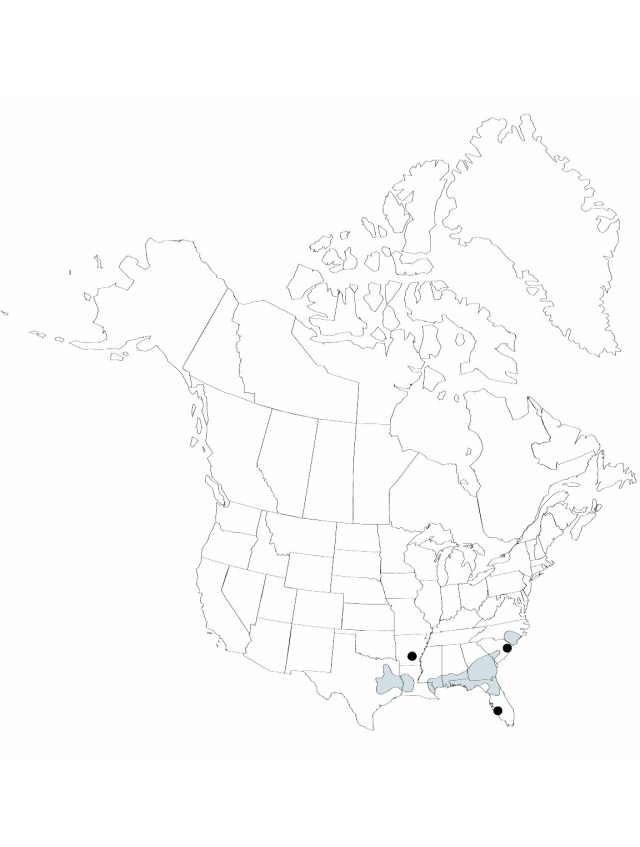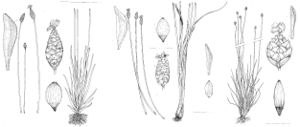Xyris baldwiniana
in J. A. Schultes and J. H. Schultes,Mant. 1: 351. 1822.
Herbs, perennial, densely cespitose, 15–40 (–50) cm. Leaves erect or ascending, 10–30 cm; sheaths glossy light-brown or redbrown, firm; blade green, linear to filiform, often angularly terete, or sulcate, rarely to 1mm wide. Inflorescences: scape sheaths exceeded by leaves; scapes linear, straight or flexuous, terete, 1 mm wide, rarely 1-ribbed; spikes ovoid to ellipsoid, 4–7 mm, apex acute; fertile bracts 4–5 mm, margins entire or erose, apex rounded. Flowers: lateral sepals included, reddish-brown, slightly curved, less than 5 mm, keel scarious, lacerate from middle to tip; petals unfolding in morning, blade obovate, to 5 mm; staminodes beardless. Seeds translucent, fusiform to cylindric, (0.7–) 0.8–1 mm, finely lined longitudinally. 2n = 18.
Phenology: Flowering late spring–fall.
Habitat: Moist to wet sands, sandy peats of bogs, pine savanna, ditches and low cleared areas, coastal plain
Elevation: 0–200 m
Distribution

Ala., Ark., Fla., Ga., La., Miss., N.C., S.C., Tex., Mexico (Chiapas), Central America (Belize), Central America (Honduras), Central America (Nicaragua)
Discussion
The beardless staminodes and the long, translucent seeds distinguish Xyris baldwiniana. Its leaf blades vary from terete to flat, and in eastern Texas and North Carolina the flat-leaved ones have been mistaken for X. elliottii. This same problem exists in Floridian narrow-leaved X. elliottii, which bears a strong resemblance to X. baldwiniana but has bearded staminodes and larger spikes.
Selected References
None.
Lower Taxa
"thin" is not a number.
